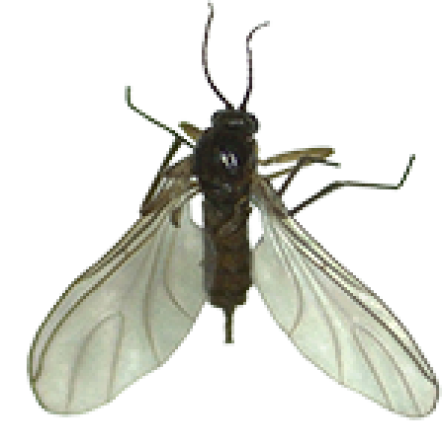

Fungus gnats
Fungus gnats are species of the family Sciaridae. These are mainly species of the genera Sciara, Bradysia, Lycoria and Lycorelle. Fungus gnats are usually small, only a few mm long. The body is elongate and dull dark in color (hence the name). The eyes are small, legs and antennae are long.
Behaviour:
They usually stay close to the surface of the soil. The larvae of fungus gnats develop in decaying parts of plants, so they are found in the substrate of flower pots. The larvae are white with a black head and 1-2 mm long. They develop into ready insects within three weeks. The hatched flying fungus gnats can become a nuisance in case of mass reproduction.
Damage/illnesses:
The larvae can attack living plant tissue and therefore damage roots. Seedlings and young plants in particular are at risk from feeding and the penetration of pathogens at the feeding sites.
Control:
Sticky traps can be used to catch fungus gnats in masses and thus reduce the infestation to a tolerable level. Fungus gnats multiply especially when watered too much. Plants should therefore be kept as dry as possible.
Prophylaxis:
Use Neocid Expert Yellow Trap for infestation detection.




